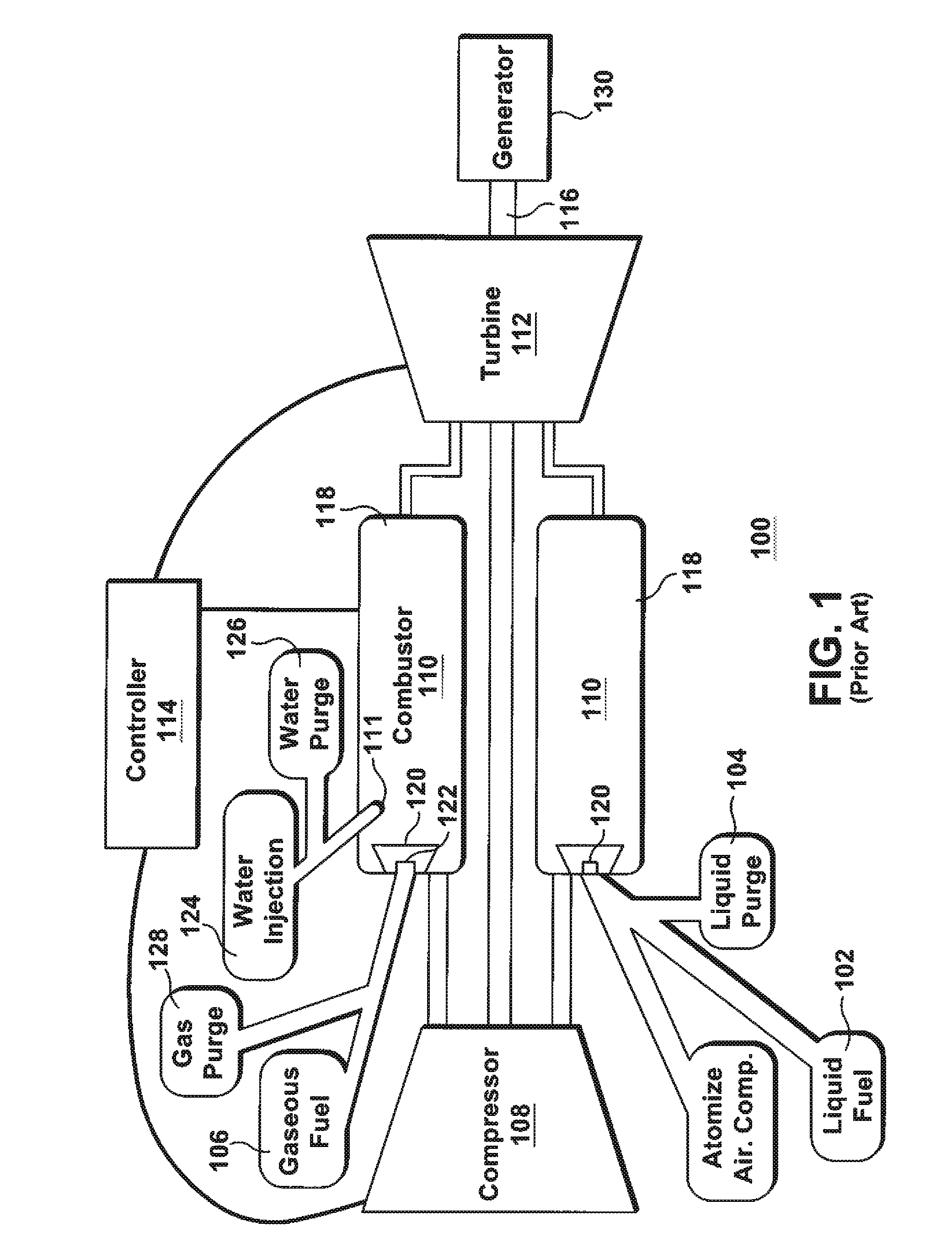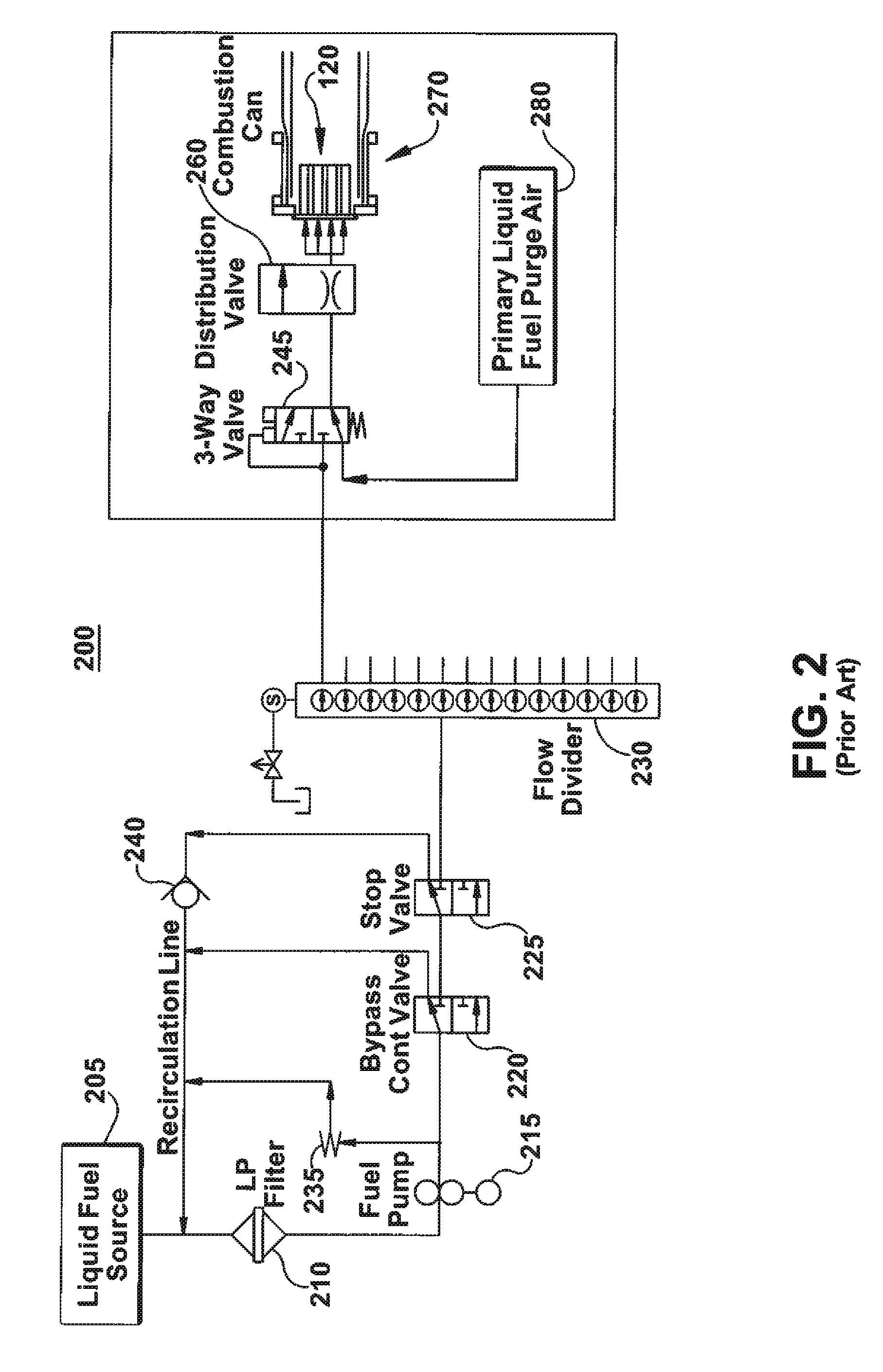Non-linear fuel transfers for gas turbines
a gas turbine and fuel transfer technology, applied in the ignition of the turbine/propulsion engine, engine starters, instruments, etc., can solve the problems of gas turbines with multiple problems, increased wear, and incorrect fuel split scheduling, so as to reduce hardware damage and wear, prolong the life of the equipment, and increase reliability
- Summary
- Abstract
- Description
- Claims
- Application Information
AI Technical Summary
Benefits of technology
Problems solved by technology
Method used
Image
Examples
Embodiment Construction
[0043]The following embodiments of the present invention have many advantages, including providing methods for transfers from liquid fuel to gas fuel and vice versa so the exposure of combustors and nozzles to adverse operational conditions resulting from low liquid fuel flow and low gas fuel flow are minimized.
[0044]Both of the problems described above result from hardware limitations, and the need is to be able to quickly get through the low flow conditions of fuel at both the beginning and end of the transfer. Moving quickly through these operational areas eliminates the increased wear or potential damage with minimum side effects on the rest of the system and overall turbine operation.
[0045]According to one aspect of the present invention, the rate of transfer between fuels is no longer a linear function but instead a multiple segment curve that is used to quickly get through problem areas of a fuel transfer. Aspects of the invention address problem areas of the transfer that ca...
PUM
 Login to View More
Login to View More Abstract
Description
Claims
Application Information
 Login to View More
Login to View More - R&D
- Intellectual Property
- Life Sciences
- Materials
- Tech Scout
- Unparalleled Data Quality
- Higher Quality Content
- 60% Fewer Hallucinations
Browse by: Latest US Patents, China's latest patents, Technical Efficacy Thesaurus, Application Domain, Technology Topic, Popular Technical Reports.
© 2025 PatSnap. All rights reserved.Legal|Privacy policy|Modern Slavery Act Transparency Statement|Sitemap|About US| Contact US: help@patsnap.com



